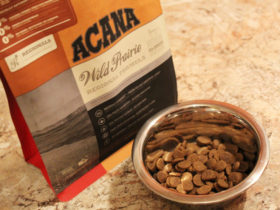Part is the third.
Part One here: window decor. What you need to know about curtains. And not only
Part two here: what you need to know about the curtains
The main rule in the design of any room — all its elements, details should not contradict each other, but ideally harmoniously combine, correlating with the general idea of the interior, to be made in a single style, and the curtains are not an exception to the general rule.
It is unlikely that it would occur to anyone to hang luxurious elegant curtains from expensive fabrics, supplemented by lambrequins with fringe, in a rustic-style room. It will also look funny and inappropriate to look light chintz curtains of colorful colors surrounded by furniture made of natural wood of classic shape.
Types of curtains
Therefore, when purchasing curtains and other window accessories, think about how organically all this decoration will fit, if not in the design of the apartment, then at least in the interior of the room for which it is intended.
The classics are characterized by expensive, natural materials, openwork forms, exquisite ornaments, elegant folds. It can be elegant curtains, curtains, lambrequins, decorated with brushes, braid, fringe. Silk, organza are often used from fabrics in combination with cornices decorated under bronze, wood, gold.
Modern is characterized by naturalness, laconicism, simplicity, clear geometric lines, strict forms, simple elements and patterns, a minimum of intricate decor and structures.
In Estient, they are unusually popular:
— Eastern interior — where, as a rule, rolled curtains are used. Distinctive feature — minimalism. The color scheme — dim, muffled tones — shades of gray, white, black.
— African interior — a combination of materials, interweaving of textures, colors of the African continent, imitating animal skins, are characteristic.
— The English interior is inherent in unobtrusive, discreet, pastel shades, soft fabrics, a combination of severity and romance.
— The Scandinavian interior is a minimum of decor, simplicity in everything, a bright color scheme, uncomplicated curtains, thin transparent curtains are often used.
— Mediterranean interior — bright and colorful colors are common — green, golden, blue, orange, decoration with artificial colors. Colorful patterns and picturesque ornaments, light, air, transparent fabrics, smoothly descending from the ceiling.
Types of curtains:
Japanese curtains — or they are also called panel or screen curtains. Look like solid fabric panels that are fixed on the cornice. There are special inserts on the upper and lower edges of the canvas, which do not allow the curtain to develop, so it simply moves through the window, resembling outwardly the screen (where and its second name).
French curtains — have the form of separate stripes, which are formed by assembly of semicircular fabric. Typically, transparent air types of fabrics are used for French curtains — tulle, silk. Perfectly complemented by curtains, lambrequins, decorated with fringe, brushes. This whole composition looks perfect in the classics.
Roman curtains — are a whole canvas, conditionally divided into even, horizontally located sections, into which the strips are inserted as a limiter. Absolutely any fabric for Roman curtains is used — both light, air, and more dense, heavy. These curtains are opened by the type of horizontal blinds — using a cord or automation.
Austrian curtains — just like French curtains, have the form of smooth folds of semicircular -shaped fabric, the top of the curtain is collected by braid, and the curtain descends with lush folds. Austrian curtains open in the same way as Roman.
That’s actually all.













Оставить коммент.